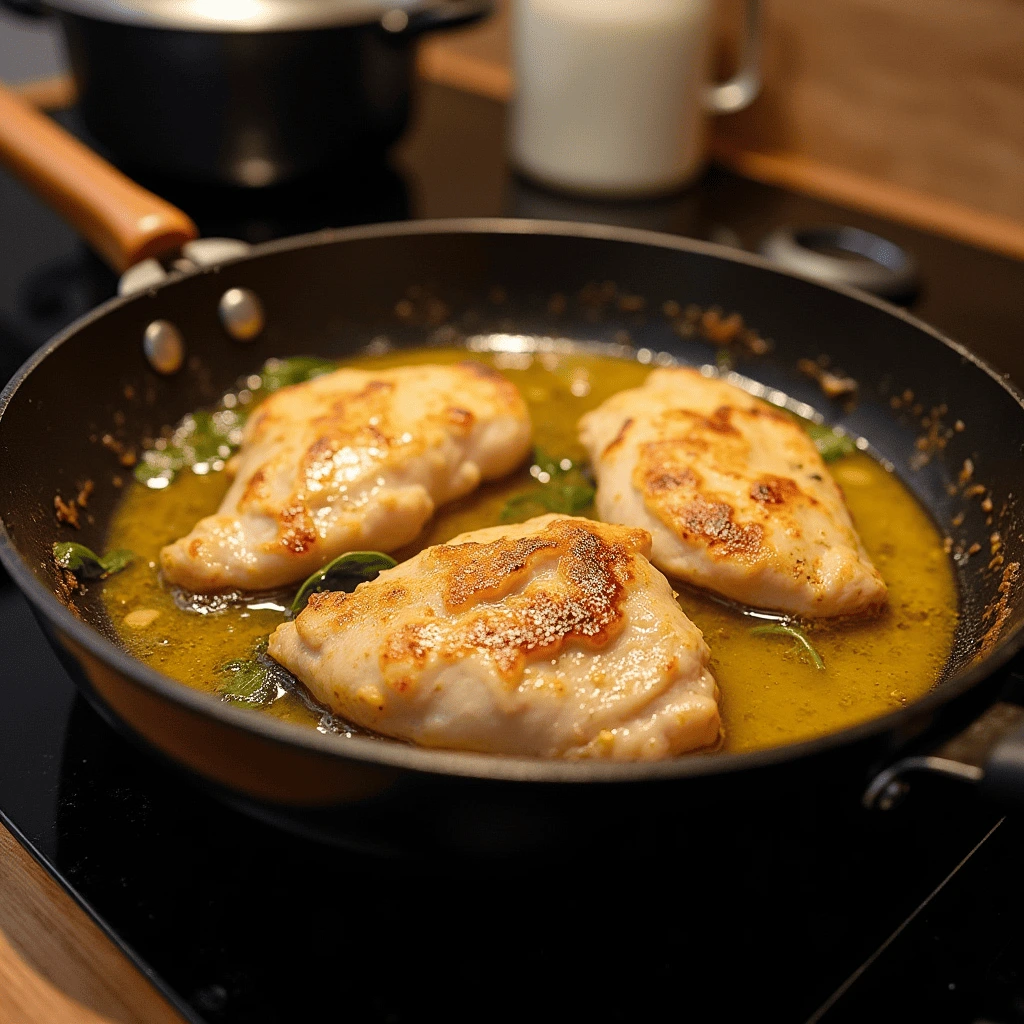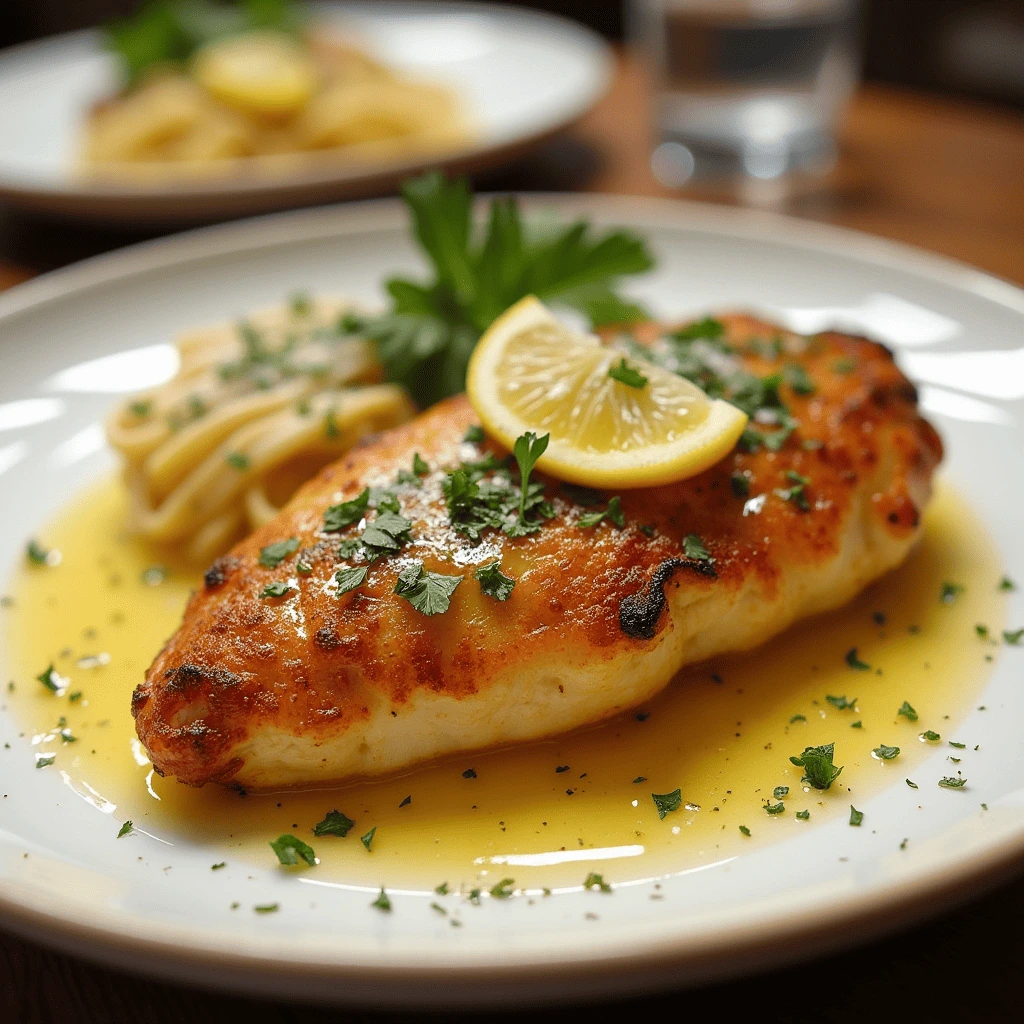Chicken Francese is a beloved Italian-American dish that has become a staple on many restaurant menus, particularly for those seeking a flavorful, satisfying meal. This dish, also known as Chicken Française, features tender chicken breasts dipped in a light egg batter, then sautéed and served with a luscious lemon-butter sauce. Its origins, preparation, and variations make it an ideal recipe for anyone wanting to enjoy a sophisticated meal without spending too much time in the kitchen. Whether you’re a cooking enthusiast or a home chef, learning how to prepare Chicken Francese will elevate your culinary skills.
The Origins of Chicken Francese
Chicken Francese, often confused with the classic Chicken Piccata, is an Italian-American invention that likely emerged in the mid-20th century. The dish is inspired by the Italian preparation method of “francese”, which involves dipping meat (typically veal or chicken) in egg batter and frying it. However, Chicken Francese evolved into a dish with a much richer, more buttery sauce, providing a twist on the traditional “francese” style. While its exact origin remains unclear, it’s widely believed to have been popularized by Italian immigrants in the United States, specifically in New York, where Italian-American cuisine took on its own distinct characteristics.
What Makes Chicken Francese Special?
What sets Chicken Francese apart from other similar dishes, such as Chicken Piccata or Chicken Marsala, is its delicate balance of flavors and textures. The crispy, golden exterior of the chicken contrasts perfectly with the silky, tangy lemon-butter sauce that coats the chicken. The sauce is typically made with fresh lemon juice, white wine, and a touch of butter, offering a refreshing citrusy punch without being overwhelming. This contrast, combined with the simplicity of the ingredients, makes Chicken Francese an ideal dish for both weeknight dinners and special occasions.
Key Ingredients for Chicken Francese
To prepare Chicken Francese, you’ll need a few basic ingredients that come together to create this mouthwatering dish:
- Chicken Breasts – Boneless, skinless chicken breasts are typically used. They are pounded thin to ensure even cooking and tenderness.
- Eggs – The chicken breasts are dipped in a mixture of beaten eggs, which helps create a golden crust when sautéed.
- Flour – All-purpose flour is used to coat the chicken, providing an extra layer of crispness and helping to thicken the sauce.
- Lemon Juice – Fresh lemon juice is the star of the sauce, lending a tangy, citrusy flavor that brightens the dish.
- Butter – Butter is used in the sauce to add richness and a smooth texture.
- White Wine – A dry white wine, like Sauvignon Blanc or Pinot Grigio, complements the acidity of the lemon and helps create a sophisticated sauce.
- Garlic – Minced garlic adds a fragrant, savory note that enhances the flavor profile of the dish.
- Chicken Stock – Adds depth to the sauce, creating a more robust flavor base.
- Parmesan Cheese – Grated Parmesan is optional but adds a savory, umami flavor that pairs wonderfully with the lemon-butter sauce.
Optional Ingredients:
- Parsley – Fresh parsley is often used as a garnish to add color and freshness.
- Capers – Although not always included, capers add an additional layer of briny flavor that works well with the lemon sauce.
- Cream – Some variations of Chicken Francese may include a splash of heavy cream for a richer sauce.
Step-by-Step Guide to Making Chicken Francese
Step 1: Preparing the Chicken

Start by preparing the chicken breasts. If they are not already thin, place the breasts between two sheets of plastic wrap or parchment paper and gently pound them with a meat mallet until they are about 1/2 inch thick. This will ensure that the chicken cooks evenly and remains tender.
Next, season the chicken with salt and pepper on both sides.
Step 2: Dipping and Coating the Chicken
In one shallow bowl, whisk together the eggs. In another shallow bowl, place the flour. Dredge each chicken breast first in the flour, shaking off any excess, then dip it into the beaten eggs, ensuring it is fully coated.
Step 3: Cooking the Chicken

Heat a large skillet over medium-high heat and add a tablespoon of olive oil. Once the oil is hot, carefully add the chicken breasts to the pan and cook for about 3-4 minutes per side or until golden brown and crispy. Avoid overcrowding the pan; cook the chicken in batches if necessary. Once cooked, remove the chicken from the skillet and set it aside on a plate.
Step 4: Making the Sauce
In the same skillet, reduce the heat to medium and add a tablespoon of butter. Add the minced garlic and cook for 30 seconds until fragrant. Next, pour in the white wine, scraping up any browned bits from the bottom of the pan. This adds flavor to the sauce.
Once the wine has reduced by half, add the chicken stock and lemon juice. Let the sauce simmer for a few minutes, allowing it to thicken slightly. Stir in the remaining butter, and once it melts, taste the sauce and adjust the seasoning with salt, pepper, or more lemon juice if needed.
Step 5: Combining Chicken and Sauce
Return the cooked chicken breasts to the skillet, spooning the sauce over them. Let the chicken simmer in the sauce for 2-3 minutes to heat through and absorb some of the flavors.
Step 6: Garnishing and Serving
Once the chicken is fully cooked and the sauce has thickened, garnish with freshly chopped parsley and, if desired, grated Parmesan cheese. Serve the Chicken Francese over a bed of pasta, rice, or with a side of steamed vegetables.
Health Benefits of Chicken Francese
While Chicken Francese is a rich and indulgent dish, it offers a variety of health benefits when prepared with care. Here’s a look at some of the nutritional advantages:
1. High in Protein
Chicken is an excellent source of lean protein, which is essential for muscle growth, tissue repair, and overall health. A 4-ounce serving of chicken breast contains approximately 30 grams of protein, making it an ideal choice for those looking to maintain or build muscle mass.
2. Rich in Vitamins and Minerals
Chicken is also a good source of essential vitamins and minerals, including B-vitamins (such as niacin and B6), which are important for energy production, and minerals like phosphorus and selenium, which play key roles in bone health and immune function.
3. Heart-Healthy Fats
Although Chicken Francese contains butter, the amount can be controlled for a healthier version. Butter provides healthy fats, and when combined with olive oil, you get a good balance of monounsaturated fats, which are beneficial for heart health.
4. Antioxidant-Rich Ingredients
Lemon, garlic, and parsley are all rich in antioxidants. Lemons are an excellent source of Vitamin C, which supports the immune system and helps the body absorb iron. Garlic has anti-inflammatory properties and is linked to various health benefits, including improved heart health.
Variations of Chicken Francese
While the traditional Chicken Francese recipe is already a crowd-pleaser, there are several ways you can modify the dish to suit your preferences or dietary needs:
- Gluten-Free Chicken Francese: Substitute the flour with a gluten-free alternative, such as almond flour or rice flour, for those with gluten sensitivities.
- Chicken Francese with Capers: Add capers to the sauce for an added layer of briny flavor.
- Low-Carb Chicken Francese: Instead of serving with pasta, pair the dish with a cauliflower rice or a vegetable-based side for a low-carb option.
Conclusion
Chicken Francese is a versatile and flavorful dish that combines the best of Italian-American cooking. With its tender, crispy chicken and zesty lemon-butter sauce, it’s no wonder that this dish is a favorite among many. Whether you’re cooking for a family dinner or hosting a special occasion, Chicken Francese is sure to impress your guests and satisfy your taste buds. By following the steps outlined above, you can easily recreate this restaurant-quality dish in your own kitchen.
Remember, you can always adjust the recipe to your tastes and dietary preferences. Enjoy making and savoring this classic comfort food that is as delicious as it is nutritious!

